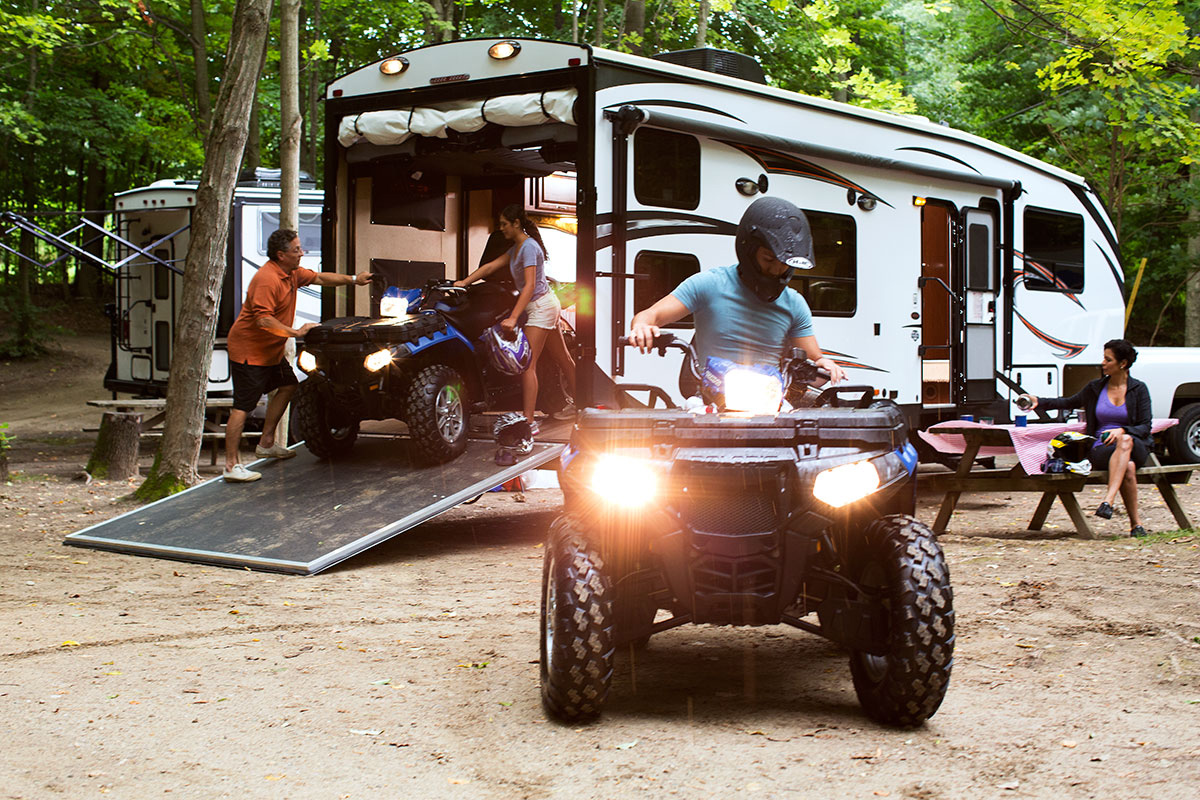Michigan is home to thousands of miles of public roads and trails, many of which connect to one another so that you can really get a tour of the state’s wilderness. Most trails are in the Northwest and Northeast regions, and the Upper Peninsula. But there are some in the southern half of the state as well. Yes, even around Detroit. You have your choice of terrain, too, depending on your comfort level and your sense of adventure!
In the state of Michigan, the DNR ORV/trail system consists of 3,700 designated trails. According to the DNR website, 73 percent of this system is through state forests. Of the system, 30 percent is cycle trail, 50 percent is ATV trail, and 20 percent is ORV route. Michigan has four types of riding opportunities. In the UP, it’s legal for ORVs to operate on state forest roads.
Where to Go
- Silver Lake State Park, Mears, Michigan – ORV Area: 450 acres of sand dunes
- Rocks and Valleys Off-Road Park, Harrison, Michigan – ORV Area: 200 acres of hills, rocks, and mud
- Bull Gap Trails, Mio, Michigan– ORV Area: 115 miles of trails, 60 of which are part of a hill climb area.
- Kalkaska Trail, Kalkaska, Michigan – ORV Area: 90 miles of trails
- Pine Ridge Trail, Newberry, Michigan – ORV Area: 49 miles of trails
Legalities
Pay attention to the signs. Though many roads and state trails are accessible to off-road vehicles, some of them are not. Also, make sure your stickers are up to date and in the correct location on your vehicle. Riders are required to wear a helmet.
Getting There
The weight limit differs by the type and weight of toy hauler you have, and which toys you plan to bring along. If the toy hauler will be doubling as your residence, don’t carry fuel in the trailer; instead, place it in the bed of your truck if you own one. If you’re deciding on purchasing a toy hauler, choose one that can adequately handle the weight of everything you intend to put inside – from motorcycles to storing pots and pans. Consider choosing a toy hauler that can carry more than what you will use it for.
Additional Tips and Resources
Your host at the campground, RV park, or RV resort you decide to stay at should be able to provide you with information about nearby trails, especially if you’ve never visited that particular area before
The Michigan DNR website has all the legal information you need, as well as interactive and PDF trail maps. We found Lake Superior Sights helpful for finding trails and information in the Upper Peninsula.
Gear
Like any sport, the proper gear is essential; this is especially true for when you’re on an ORV trail. Proper gear will protect your safety and help protect you from the elements and anything else you might encounter on the trails.
- Helmet: For many trails, a helmet is a requirement, but even when it’s not, you should never ride without one. A full-face helmet is recommended.
- Goggles: Eyewear will shield you from any dust, dirt, or rocks that may spray you.
- Gloves: If you’re riding an ATV, gloves will be a necessity to protect your hands from bushes or branches that you come across.
- Close Toed Shoes: You should never ride an ATV/ORV with open toed shoes. Boots are definitely preferable, but in a crunch, tennis shoes will suffice.
- Long Sleeved Shirt and Pants: The more you can protect your body from the elements, the better. Nothing ruins a fun weekend quicker than a nasty sunburn. Additionally, if you are to get into an accident, the more clothing you are wearing, the more protected you will be.
- Seatbelt: If you’re riding in an ORV, you want to always buckle up. If you need to stop quickly or make a fast maneuver, you want to ensure that you will stay securely inside the vehicle.
Be sure to plan your ORV trip in advance so you can secure space at a local RV campground, and refer to our interactive map to find MARVAC members nearby.

